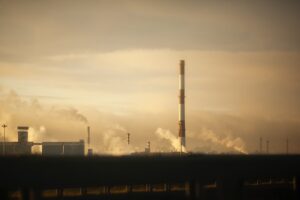Stubble burning is when farmers burn the leftover crops after harvesting. They do this because it’s cheap and quick. A recent research paper published by Sai Deepak Pinakana from the University of Texas have shown this could be hazardous to the environment and human health.
In the United States, agriculture covers a lot of land, about 40%. They grow crops like barley, oats, corn, soybeans, rice, and sugarcane. In Texas, they grow a lot of sugarcane, which is harvested in an area called Rio Grande Valley. Farmers burn the leftover sugarcane because it’s cheaper than other methods. This burning releases gases like carbon monoxide, nitrogen oxide, carbon dioxide, and particulate matter.
When farmers burn sugarcane that has been fertilized with nitrogen, it can release nitrous oxide, which is a greenhouse gas. This is because nitrogen is used to help sugarcane grow faster, but it can cause other problems when the leftover crops are burnt.
The Texas government has rules about burning crop residue for agriculture, and it should only be done if there are no other practical options available. However, growers still favour burning the leftover crop as it is inexpensive and quicker. The number of times they burn their crops depends on how many crops they grow. NASA has reported a high number of fires in Texas during February and March, which is when farmers start harvesting their crops.
Burning produce residue leads to a surge in particulate matter and black carbon levels (PM10 levels). PM10 is a type of particle that is harmful to human health and can cause long-term and short-term health problems. Black carbon is also harmful to humans and contributes to climate change. Carbon monoxide levels also increase during burning, which is toxic to the human body and can lead to the formation of ground-level ozone.
Measuring the air quality in urban and rural areas that have a high percentage of agricultural farms is important. The Lower Rio Grande Valley is one of the principal producers of sugarcane in USA, but has very few air monitoring stations in this region. It would be helpful to use low-cost sensors to measure air quality parameters in this region, as they are effective in assessing particulate matter concentrations. Further research in this region should consider using low-cost sensors to measure air pollution levels. In conclusion, stubble burning is not a good idea. It harms our health, the environment, and crops. Although it might be cheap and quick, there are better ways to use leftover crops. Governments should encourage farmers to use alternative methods and make sure that they follow the laws to protect the air we breathe.
Reference







